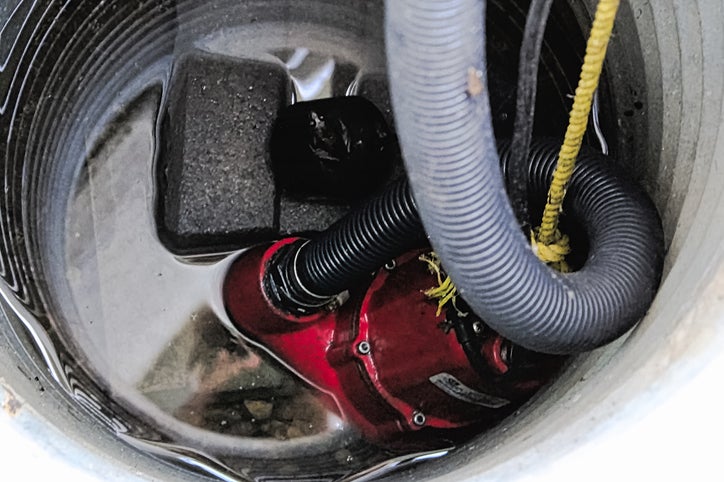Why isn’t My Sump Pump Working?

Heavy summer rains can cause basement flooding, but your sump pump keeps the rising water level at bay. However, as with all mechanical equipment, sump pumps break down sometimes. Here are the top reasons why your sump pump might stop working and what to do about each one.
Power Failure
An electrical power outage is the most common reason for a sump pump to stop working. This is logical since stormy weather is both a natural cause of blackouts and a reason to need your sump pump. To prevent power failure from impacting your sump pump, consider installing a backup generator.
Sump pumps are also vulnerable to power surges. You need a whole-house surge protection device to protect the appliance effectively.
Incorrect Size
When a sump pump is too large for the job at hand, it’s forced to work harder, shortening its lifespan. If it’s too small, it might not keep up with a high volume of water. A professional can help you size and install your sump pump properly for the best results and longest lifespan.
Improper Installation
The basic requirements for installing a sump pump are quite straightforward: dig a hole in the lowest part of your basement or crawlspace, set the pump inside it, and plug it into a ground fault circuit interrupter (GFCI) outlet. Plumbing is also needed for the pump to move water out of the pit and away from the foundation.
However, some crucial extras significantly affect the performance and longevity of your sump pump. For instance, most manufacturers recommend (or require) the installation of a check valve on the discharge line. Otherwise, the backward flow of water could cause the pump’s impeller to rotate in reverse, unscrewing itself from the motor shaft. You may also need to drill a small air relief hole in the discharge line between the pump and the check valve.
Switch or Float Arms Problems
The sump pump shouldn’t be placed directly on gravel or dirt because debris could enter the pump and interfere with its on/off switch or float arm. If this happens, the pump may operate erratically or fail to pump out water when the pit starts to fill. The key is to line the pit with a perforated plastic basin and install the pump in such a way that it doesn’t shift out of position.
Lack of Maintenance
If you never test the sump pump, you won’t know it has stopped working until the next torrential rainstorm. To prevent this scenario, check your pump every two to three months by pouring a bucket of water into the pit. Make sure the pump runs properly and transports liquid to the desired location. This is also a suitable time to check for clogged discharge lines. Adding grated coverings is an effective way to keep debris, animals, and nests out of the pipe.
Whether you need sump pump repair or maintenance, Bob Hoegler Plumbing can help. Call us today at 732-521-0133 to request plumbing services in Monroe Township.
RECENT POSTS
categories
Archives
2024
2023
2022
2021
2020
2019
- December (2)
- November (2)
- October (2)
- September (2)
- August (2)
- July (2)
- June (2)
- May (2)
- April (2)
- March (2)
- February (2)
- January (2)

